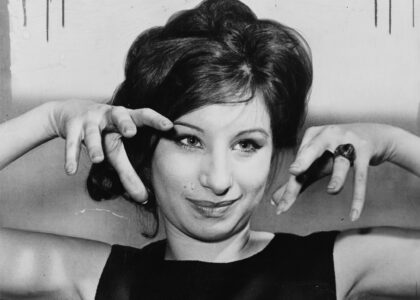Sadly, this piece is not going to teach you how to work the fretboard so you can play “Eruption” like Eddie did. And it’s not going to teach you how to climb on to the top of the speakers and jump off, do the splits and avoid splitting your spandex. (Maybe that’ll be next week.)
But one of the things I think about from time to time is the legendary tour rider that Van Halen had during the peak of their success in the 1980s.
Powered by RedCircle
The rider is a document that literally rides along with the rest of an entertainment contract, stipulating things that are supposed to be part of the deal for a given show. Concert riders in pop music are legendary for their excesses, from simple things like demanding certain brands of bottled water that have been chilled to a specific temperature, to the more… interesting, like dressing rooms that have been visited by a shaman before the headline performer arrives, and all kinds of things. I remember being backstage once in the dressing room of an artist who has had more than a dozen #1 hits, who literally threw a jar of peanut butter across the room because someone had broken the seal on the jar – something that had been done as as a courtesy, to keep the star from having to peel back the paper themselves.
Among the most famous sections of a concert rider in rock and roll history is Article 126 of the Van Halen rider, which according to David Lee Roth, stipulated the following:
“There will be no brown M&M’s in the backstage area, upon pain of forfeiture of the show, with full compensation.”
Article 126, Van Halen tour rider
If you don’t know what the legendary Paul Harvey would have called the rest of the story, it goes like this: The clause was the band’s way of making sure that all the other details – the really important ones – had actually been followed up on, because someone had obviously taken the time to read the contract. If the band shows up at the gig and find brown M&M’s, who knows what other things got skipped, like making sure those monitors had been anchored safely for Diamond Dave to climb on top of?
I thought about this story this week because I’m auditioning a new course platform for Copywriting 101: Enhancement Marketing, the copywriting course I taught at a brick-and-mortar college that I’ve converted to an online version. (Quick note about that: It’s expensive, and it’s worth it. There’s a link in the show notes, and a coupon code at the end of this episode that will save you a significant chunk of money.)
But that’s not what I’m here to talk about.
As a marketer, I pay attention to the little things, almost to an obsessive degree, but I would argue it has served me well.
If Van Halen had come to do a show in a town where I was doing a morning radio gig, here’s what they would have found: Not only were there no brown M&M’s in the dressing room, but none in the entire town, because our radio station would have had some kind of “Brown Appreciation” event where we had taken all the brown M&M’s out of circulation in town and handed them out for free to the audience.
So imagine my disappointment when I’m going through the demo videos for the course platform I’m considering. They’re narrated by a woman in a company T-shirt, who I assume got the gig as most men and women in that role do, by being the most photogenic staff member available when the videos were shot. I can guarantee, with all due respect, that it was not because of her technical expertise.
I know this because there’s a massive difference in the quality of her audio in the segments where she is ON camera, versus the quality of her audio when she’s doing the voiceover for an animated segment or screen demo.
My problem, though, isn’t with the non-professional voiceover, and the quality of the audio. In fact, if you’re a regular listener to this show, you know that as far as I’m concerned, if I’m a fan and your content is compelling, you could deliver it to me through two tin cans connected by a string.
My problem is with the lack of consistency. Using two different microphones and two completely different sounds in the same recording shows me that you’re willing to cut corners in the name of simplicity.
The people who made the video could either have made sure to record better quality audio while they were recording the talking head portions, or they could have simply used the same audio setup for the talking head portion to record the voiceover sections. Just record it all in the same session.
The simplest way around all of this is to lock down your microphone and processing settings so that everything you record sounds exactly the same all the time, no matter what microphone you are using.
For example, I have my main studio microphone, and I also have a lapel mic that I use for video – it’s one I bought from Amazon a couple of years ago for twenty dollars, and it’s the one that really got under the skin of the Podcasting Cool Kids who decided to die on the hill that required you to have an expensive mike to be considered a credible podcaster.
But in my case, I spent a bunch of time playing with both microphones so they sound identical. The average listener – and that’s who I do these shows for, not for the audio engineers and the cool kids – the average listener can’t tell the difference between one microphone and the other, so I can edit, change sources, record punches and pickups if I need to, and no one will know.
But in the case of this promo video, they obviously liked the audio quality for the VO portion, and either didn’t want to spend the time improving the audio part of the talking head shoot, or couldn’t figure out how to do it.
Either way the bottom line is, they gave up.
If that’s their approach to quality control with their marketing, I can’t help but wonder if they use that same approach… with their product?






